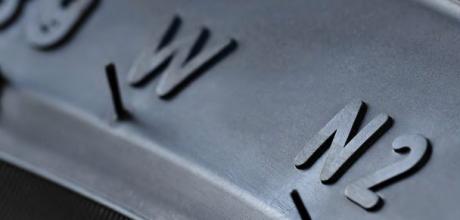Technology explained - N-rated tyres

We all know tyres are crucial in keeping your Porsche on the road, but what are N-rated tyres and how do they differ from non N-rated variants?
Commonly regarded as a distress purchase in motoring, tyres play a huge part in extracting the maximum driving dynamics of an already capable sports car. Porsche realised this and since 1988 it’s drawn up a list of tyres that it approves for the 911, giving them an N rating. Such tyres are extensively tested by Porsche engineers, who among other things confirm that the tyres’ performance matches the car’s requirements across various driving scenarios and dynamics, as well as driving comfort and high-speed performance. Put simply, this means an N-rated tyre was designed for your 911.
Originally, tyres worked solely off a speed rating, of which VR was the highest and referred to speeds over 150mph. As production cars’ maximum speeds increased beyond that, the need arose for tyres that better matched the handling characteristics of the 911, so the N rating was created.
The N ratings takes in the letter and a number, from N1 to N6. N-0 will be the first generation of that product. N-1 is the second-generation development, and so on. If your 911 currently wears N-3, you should replace both tyres on an axle with the same generation, of the same brand. Redesign a tyre rather than improve it, and it becomes a new generation: N-0 pattern. A second letter specifies the vehicle, so NA-0 is a tyre developed specifically for a 911 Carrera, NB-0 is likewise for a Boxster or Cayman.
The development process sees Porsche working with tyre manufacturers, striving to develop a product that matches Stuttguart’s high expectations. That sign-off involves factors such as stabilisation systems and differentials, not just wet grip or track use. Michelin alone tested 30,000 tyres in developing an N-rated range for the 992.
A tyre manufacturer may make two apparently identical tyres, but only one would carry the N rating on the sidewall. There’ll be manufacturing differences that change anything from tyre compounds, sidewall stiffness or internal construction. This means the N-rated version really is specific to a 911. Indeed, manufacturers may publish a list of approved tyres dating back to 1963 model 911s. Those lists will feature not just N-0 products, but many in N-3 or -4 generations, indicating that although the host vehicle is a classic, the homologated tyre is as modern as it can possibly be.

